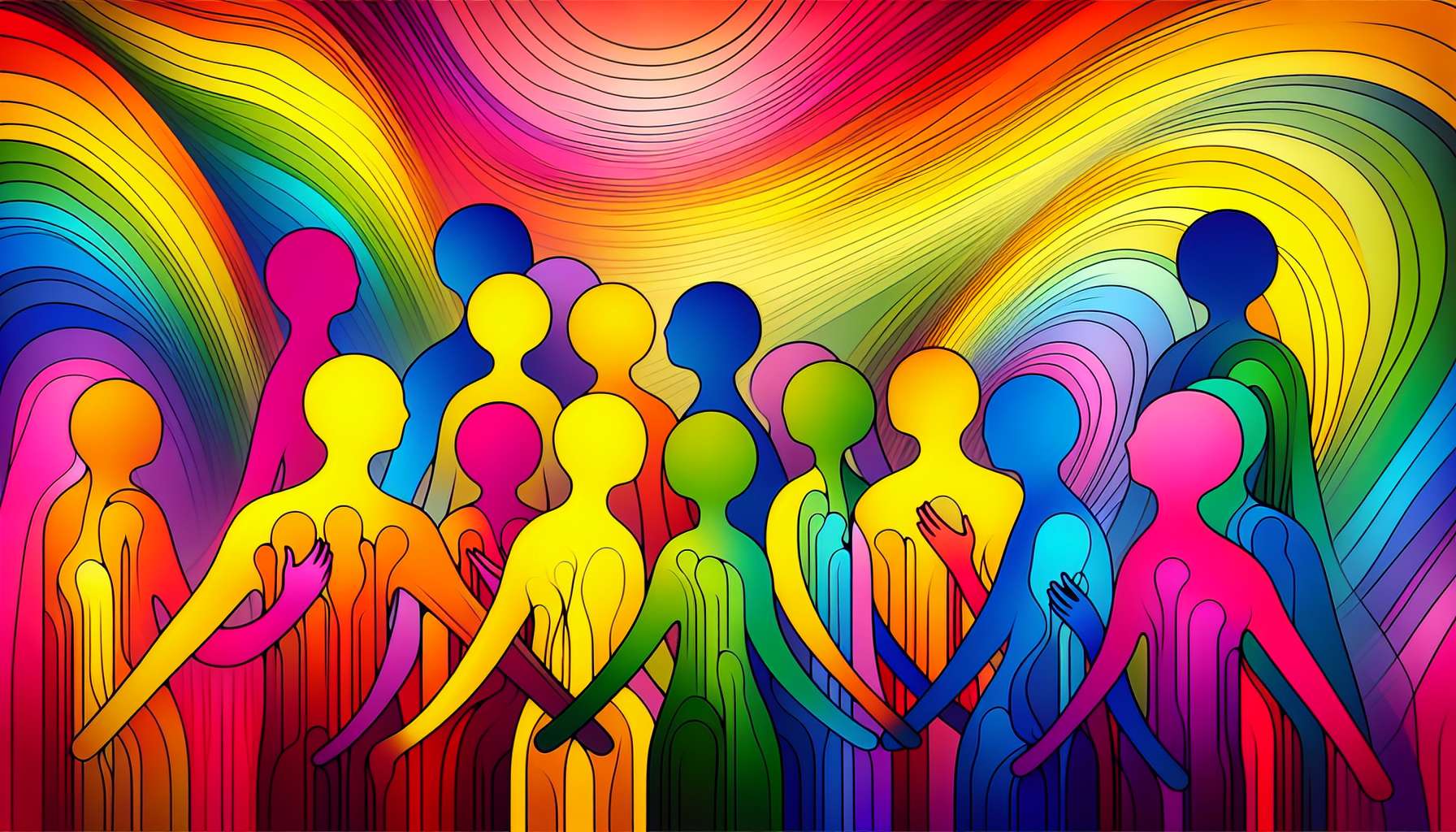Welcome to this second sub-module, which will allow you to deeply explore the spectrum of sexual orientations. After laying the groundwork of LGBTQ+ terminology in the previous sub-module, we will now focus on the diversity of sexual and romantic attractions.
Sexual orientation is often represented as a spectrum, with heterosexuality (exclusive attraction to the opposite gender) at one end and homosexuality (exclusive attraction to the same gender) at the other. Between these two poles lies a multitude of orientations, such as bisexuality (attraction to both genders), pansexuality (gender-independent attraction), and asexuality (absence of sexual attraction).
It is important to understand that sexual orientation is not a choice but an innate characteristic of the person that is discovered and affirmed over time. It is also not reduced to a sexual practice, but encompasses emotional and romantic attractions and the ability to form intimate relationships.
Let’s take the example of bisexuality. Contrary to popular belief, being bisexual does not mean being equally attracted to men and women, nor does it necessarily involve having relationships with both genders simultaneously. Bisexuality encompasses a wide range of experiences: one can be predominantly attracted to one gender while acknowledging the ability to be attracted to other genders, or experience attraction independently of gender.
Pansexuality is an orientation close to bisexuality, but with an important nuance: attraction is made regardless of gender, including non-binary and transgender individuals. A pansexual can be attracted to someone without taking their gender into consideration, focusing on other aspects of their personality.
On the opposite end of the spectrum, asexuality is characterized by a lack or low level of sexual attraction. Contrary to common misconceptions, asexual individuals are not necessarily single or lacking a desire for intimate relationships. Many experience romantic attractions and want to form couples, without sexuality necessarily being a central or required element.
It is crucial to keep in mind that sexual orientation is fluid and may evolve over a person’s lifetime. Some people discover their homosexuality or bisexuality later in life, after having had heterosexual relationships. Others see their attraction fluctuate over time based on their experiences and encounters. This fluidity is perfectly normal and does not question the validity of sexual orientation.
As a coach, you must handle the diversity of sexual orientations with openness and kindness. Keep in mind that each person has their journey and there is no right or wrong way to live one’s orientation. Your role will be to offer a safe space to explore these questions, safe from society’s judgments and assumptions.
Illustrate your points with concrete examples. You can mention public figures who have openly talked about their bisexuality, like singer Lady Gaga or actress Kristen Stewart. Or reference TV shows featuring pansexual characters, such as Jack Harkness in Doctor Who or David in Schitt’s Creek.
By exploring the spectrum of sexual orientations, you will enable your clients to better understand their experiences and find the words to express them. In doing so, you will contribute to creating a more inclusive society where everyone can live their sexual orientation in a fulfilling and authentic way.
Key Takeaways:
– Sexual orientation is a spectrum from heterosexuality to homosexuality, with many orientations in between, such as bisexuality, pansexuality, and asexuality.
– Sexual orientation is an innate characteristic that unfolds and affirms over time. It includes sexual, emotional, and romantic attractions and the ability to form intimate relationships.
– Bisexuality encompasses a wide range of experiences and is not reduced to an equal attraction to men and women.
– Pansexuality is characterized by an attraction independent of gender, including non-binary and transgender individuals.
– Asexuality is characterized by a lack or low level of sexual attraction but does not exclude the desire for intimate or romantic relationships.
– Sexual orientation is fluid and can evolve over a person’s lifetime without challenging its validity.
– As a coach, it is essential to handle the diversity of sexual orientations with openness and kindness, without judgment or assumption.
– Concrete examples from public figures or fictional characters can illustrate the diversity of sexual orientations and help to better understand these concepts.
👉 To download docx (Editable) file click here : Click here
👉 To download PDF file click here : Click here
👉 To download MP3 file click here : Click here







